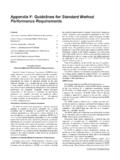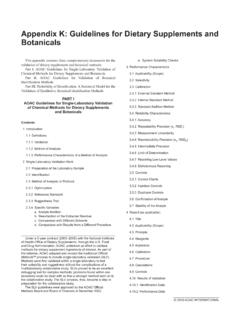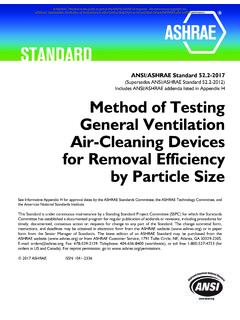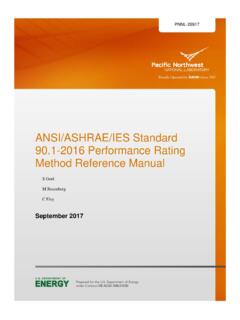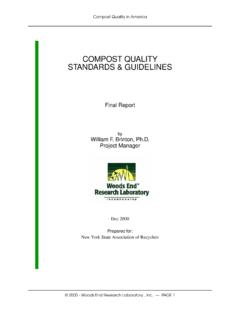Transcription of Clinical Guidelines by Consensus Recording a Standard 12 …
1 Clinical Guidelines by Consensus Recording a Standard 12-Lead Electrocardiogram An approved method by the Society for Cardiological Science & Technology (SCST). Issue Date: September 2017. Review Date: September 2022. Clinical Guidelines by Consensus Recording a Standard 12-lead electrocardiogram An approved method by the Society for Cardiological Science & Technology (SCST). Document ID CS 3. Lead Author(s) Brian Campbell, David Richley, Catherine Ross, Christopher Eggett Lead Authors' job titles See acknowledgements Document version number CS Ratifying committee SCST Council Ratification date September 2017.
2 Review date September 2022. Body responsible for review SCST Council Committee for review standards Committee Contact for document Referencing Included Yes Key Words (for searching) ECG, electrocardiogram, 12-lead Intended users Practitioners Recording 12-lead ECG. Equality Impact Assessment Yes Please cite as: Campbell B, Richley D, Ross C, Eggett CJ. Clinical Guidelines by Consensus : Recording a Standard 12-lead electrocardiogram. An approved method by the Society for Cardiological Science and Technology (SCST) 2017. Available at: (include date accessed). CS3: Recording a 12-lead ECG Page 2. Acknowledgements Lead authors.
3 Brian Campbell, SCST Chair of standards Clinical Scientist Head of Training in Echocardiography/Cardiac Outpatients Manager Guy's & St Thomas's NHS Trust Dave Richley, SCST Vice President Retired Cardiac Physiologist Associate Lecturer, Newcastle University Academic Tutor, Sunderland University Catherine Ross, SCST President Clinical Scientist Clinical Leadership Lead at the Office of the Chief Scientific Officer NHS England Christopher Eggett, SCST Education Committee Member Senior Lecturer & Deputy Dean Post graduate taught programmes Newcastle University With many thanks to the following people for help in the document review process: Joanne Ashton, SCST Treasurer Clinical Scientist Tracy Simpson, SCST Council member CS3: Recording a 12-lead ECG Page 3.
4 Contents 1. CHANGE HISTORY .. 5. 2. INTRODUCTION .. 5. 3. 6. 4. PATIENT EXPERIENCE, PRIVACY AND DIGNITY .. 6. PATIENT IDENTIFICATION .. 6. COMMUNICATION AND INFORMED CONSENT .. 7. CHAPERONE .. 7. LEVEL OF UNDRESS .. 7. 5. PATIENT PREPARATION .. 8. PATIENT POSITION .. 8. SKIN PREPARATION .. 8. 6. ELECTRODE PLACEMENT .. 9. LIMB ELECTRODE 9. PRECORDIAL (CHEST) ELECTRODE POSITIONS .. 10. TECHNIQUE FOR LOCATING CHEST ELECTRODE POSITIONS .. 11. 7. OBTAINING A GOOD QUALITY Recording ..12. VARIATION FROM Standard .. 13. 8. QUALIFICATION AND TRAINING OF STAFF Recording 12-LEAD ECGS ..13. 9. EQUIPMENT AND Clinical ROOM SPECIFICATION.
5 13. EQUIPMENT SPECIFICATION .. 14. ENVIRONMENTAL CONSIDERATIONS .. 14. INFECTION 15. 10. DOCUMENTATION, PROCESSING, STORAGE AND CONFIDENTIALITY OF ECG. RECORDINGS ..15. 11. 12. SPECIAL DEXTROCARDIA .. 16. POSTERIOR ELECTRODE POSITIONS .. 17. ELECTROCARDIOGRAPHY ON CHILDREN .. 18. 13. CONCLUSION ..18. 14. 15. APPENDIX 1: 12-LEAD ECG SERVICE AUDIT TOOL ..23. 16. ECG Standard ELECTRODE POSITIONS REMINDER CHART ..24. 17. ECG SETTINGS REMINDER CHART ..25. CS3: Recording a 12-lead ECG Page 4. 1. Change history Version Date Author Reason Ratification Required 1 Feb 2010 Consensus Standardisation of Yes: SCST.
6 Practice Council 2 June 2014 Consensus Standardisation of Yes: SCST. practice Council Nov 2015 Consensus Citation added, Not required contributor details updated 3 Sept 2017 Consensus Standardisation of Yes: SCST. practice Council 2. Introduction The resting 12-lead electrocardiogram (ECG) is an important first line investigation that records the electrical activity of the heart. This investigation can aid the diagnosis and help define the appropriate patient treatment pathway in a range of cardiac conditions, many of which are life threatening and require immediate action. Modern ECG machines are portable, low cost and easy to use and these features facilitates recordings in a wide variety of environments including hospitals, GP surgeries, ambulances, sports facilities and patients' homes.
7 The challenge is to ensure high-quality, consistent Recording techniques are maintained irrespective of the Clinical scenario. ECGs not performed to appropriate standards can result in incorrect diagnoses and inappropriate treatments1-7. There are many personnel Recording ECGs who have not been properly trained or assessed8. Personnel may consider themselves 9, 10. competent , despite a lack of training, and yet lack essential knowledge in ECG Recording technique that results in incorrect ECG recording11-14. Evidence indicates that appropriate training leads to fewer ECG Recording errors15. While these Guidelines generally apply to the hospital/ Clinical environment, where most ECGs are performed, the training of personnel and technical aspects of the performance of a Standard ECG apply to all situations.
8 SCST recommends that all personnel who record ECGs are appropriately trained, assessed and qualified. These Guidelines provide essential information pertinent to the correct ECG. Recording technique in keeping with good scientific practice16. They are written by expert practitioners following critical evaluation of published evidence. Where evidence was limited a Consensus decision was made. CS3: Recording a 12-lead ECG Page 5. 3. Purpose In promoting excellence in the Recording of 12-lead ECGs, these Guidelines address the following areas: Patient experience, privacy and dignity o Patient identification o Communication & Informed consent o Chaperone o Level of undress Patient preparation o Patient position o Skin preparation Electrode placement.
9 O Limb electrode positions o Chest electrode positions o Technique for locating chest electrode positions Obtaining a good quality Recording o Paper speed o Use of the filter o Variation from Standard Amplitude gain Qualification requirements for practitioners Equipment and Clinical room specification o Equipment o Environment o Infection control Documentation, processing, storage and confidentiality of 12-lead ECG. recordings Special situations 4. Patient experience, privacy and dignity It is vital that patient experience is placed at the centre of the process and to ensure that the patient's perception of the process is positive16.
10 Patient Identification It is essential that the patient undergoing the procedure is correctly identified. For patients unable to provide their own identifying details confirmation of identity must be sought from carers or by using hospital wristbands. The printed Recording must always be checked to ensure it bears the correct patient details. Practitioners must be aware of potential sources of error if details are not entered digitally for every patient some machines retain the CS3: Recording a 12-lead ECG Page 6. information from the last patient and these may be incorrectly printed on the ECG if they have not been altered.

